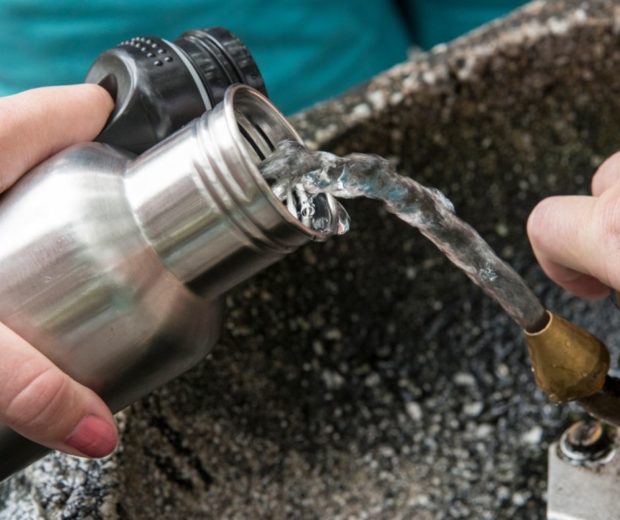
Water faucet/ Water supply stock image. INQUIRER FILES
MANILA, Philippines — The National Water Resources Board (NWRB) is currently reviewing the request of the Manila Waterworks and Sewerage System (MWSS) and two water concessionaires for additional allocation of water supply in Metro Manila.
In a public briefing on Friday, NWRB Executive Director Dr. Sevillo David Jr. said they are working on the MWSS’s request for a 2-cubic meter per second increase in water allocation.
“Sa ngayon po ano, at ito nga pong request ng MWSS para po sa karagdagang alokasyon po, sa ngayon po ay iyan po ang ini-evaluate po ng NWRB Board,” David said
(Right now, this MWSS request for an additional allocation is currently being evaluated by the NWRB.)
David said among the factors they are considering on the request is the demand of the public and the current water supply in Angat Dam amid the looming El Niño phenomenon.
“Tayo naman po sa board ay maging bukas sa pagkonsidera po nitong kasalukuyang request po para po sa kapakanan po ng ating kababayan po,” he added.
(The board should be open to considering this current request for the sake of our countrymen.)
READ: Maynilad warns of declining water supply from La Mesa Dam
At present, the water allocation for the month of March is around 50 cubic meters per second. The approved allocation for the month of April, on the other hand, is 48 cubic meters per second, according to David.
He said MWSS has requested to increase water allocation to 52 cubic meters per second to avoid or lessen rotational water interruptions in Metro Manila.
“Kasi nga po ang nangyayari, bukod sa ina-allocate, nagre-release po sa Angat Dam sa ngayon at medyo mababa ang volume ng tubig na nakakarating po sa mga kababayan natin,” David said.
(What’s happening is that aside from what is being allocated, Angat Dam is also releasing which is why the volume of water reaching our countrymen is quite low.)
As of March 29, the water level in Angat Dam was at 202.84 meters which is above the normal operating level of 180 meters.
David said their supply augmentation or alternatives such as deep wells and treatment facilities are ready in case the impact of the lack of water supply continues.
READ: Pagasa issues El Niño Watch; urges public to prepare for warm, dry season
He also mentioned intensifying sources in Laguna Lake to aid in the threat of El Niño by the third quarter of the year.
“At ito pong sa mga irigasyon po ay ang kasama po natin, ka-partner natin sa NIA ay naghahanda na rin po ng mga kaukulang contingency plan para po mapaghandaan na kung sakali po na magkaroon ng El Niño ay magiging dahilan din po o posibleng magkaroon ng kabawasan sa alokasyon ay may mga measure, may mga contingency plan po ang NIA para po matugunan at hindi naman po makaapekto ito sa mga kababayan po at pangangailangan ng mga magsasaka po dito sa Bulacan at Pampanga,” he said.
(On irrigation, the National Irrigation Administration or NIA is our partner on this. NIA is also preparing the corresponding contingency plans in the event of an El Niño, which may also be a reason for possible reduction in allocation, but NIA has contingency plans to address it so it won’t have much impact on our countrymen and on the need of farmers in Bulacan and Pampanga.)
To recall, MWSS and officials of Maynilad and Manila Water requested additional water allocation after discussing the possible effects of the El Niño phenomenon on water supply.
During El Niño, there is less rainfall to fill dams causing water supply shortage.
On March 28 and 29, Maynilad started implementing daily service interruptions to preserve the remaining supply in the Angat-Ipo system due to the impending El Nino phenomenon.
READ: Maynilad announces daily water interruption starting March 28, 29
The MWSS then decided to ask for additional allocation from the NWRB in order to avoid or reduce the number of hours of water interruption.
David then reminded the public to conserve water at home and practice recycling and reusing of water, and fix leakage problems in their homes as this would help in the conservation efforts they are doing. — Meralyn Melitante, trainee